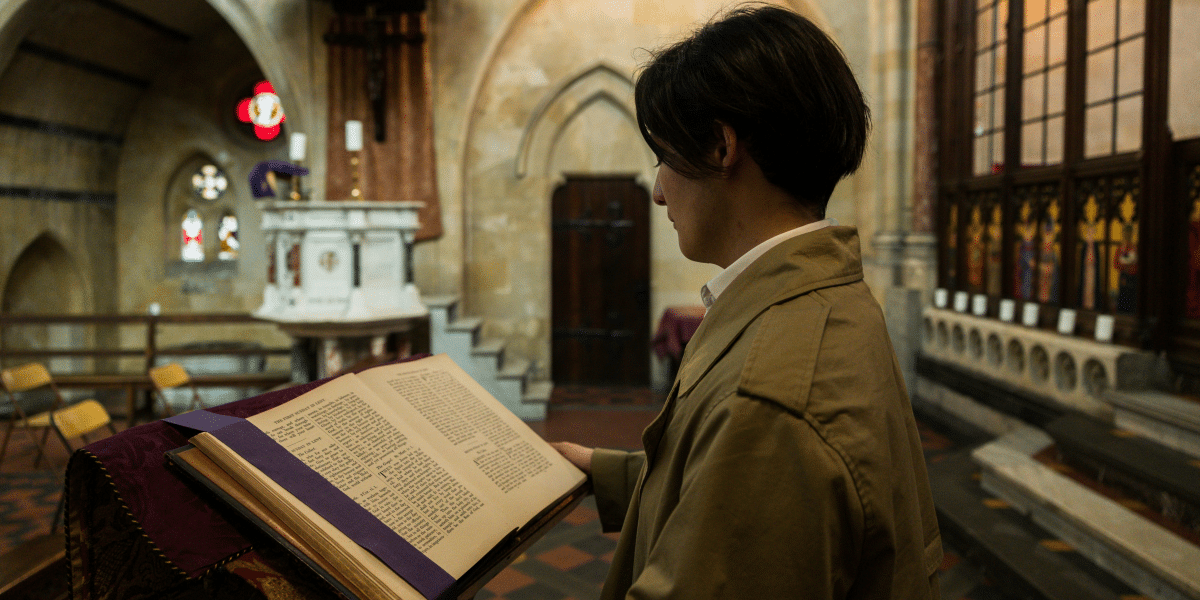What is Peer Mentoring, and How Does It Work?
Peer mentoring is a form of guidance where individuals with similar experiences, often of the same age or career stage, support each other. Unlike traditional mentoring, where a more experienced mentor guides a less experienced mentee, peer mentoring involves a reciprocal relationship. Both parties share knowledge, experiences, and advice, fostering mutual growth and learning.
In peer mentoring, the mentor and mentee are equals, creating a comfortable environment for open communication. This approach provides more relatable advice since the mentor understands the mentee’s challenges. Peer mentoring can occur in various settings, including schools, universities, workplaces, and community groups. It is particularly effective in environments where peers can share relevant and timely insights based on their own experiences.
The key difference between peer mentoring and traditional mentoring lies in the dynamics of the relationship. Traditional mentoring typically involves a senior mentor with significant experience guiding a junior mentee. In contrast, peer mentoring is more collaborative, with both parties contributing to and benefiting from the relationship. This equality fosters a sense of shared purpose and trust, making it easier for mentees to seek help and for mentors to offer support without feeling superior.
Peer mentoring effectively builds skills, builds confidence, and creates a sense of community. It empowers individuals to learn from each other, develop problem-solving skills, and build networks that can be valuable throughout their personal and professional lives. Whether in academic settings or professional environments, peer mentoring provides a supportive structure that benefits all participants.
How does peer mentoring work?
Peer mentoring pairs individuals who have similar experiences or are at similar stages in their personal, academic, or professional journeys. The process begins with selecting mentors and mentees based on common goals, interests, or challenges. Program coordinators can make these matches, or participants can choose partners they feel comfortable working with through self-selection.
Once paired, the mentor and mentee establish a relationship built on mutual trust and respect. They typically set goals and expectations at the beginning of their mentoring relationship, ensuring that both parties are aligned on what they hope to achieve. This can include academic support, career advice, or personal development. The mentor, while not necessarily more experienced in all areas, shares their insights, offers guidance, and helps the mentee navigate challenges based on their own experiences.
Interactions between mentors and mentees can vary depending on the program’s structure. Meetings may take place in person, online, or a mix of both, depending on convenience and preference. These sessions can be scheduled regularly, such as weekly or monthly, or occur as needed, depending on the mentee’s needs. During these interactions, mentors provide advice, share resources, and help mentees reflect on their progress.
The success of peer mentoring relies heavily on open communication, active listening, and a collaborative approach. Both the mentor and mentee benefit from the relationship, as mentors also gain new perspectives and reinforce their own knowledge through teaching.
Peer mentoring is a dynamic and flexible process that adapts to the needs of both participants. It fosters growth, learning, and a sense of community, making it an effective tool in various settings, from schools to workplaces.
What are the benefits of peer mentoring?
Peer mentoring offers numerous benefits for both mentors and mentees, making it a valuable approach in educational, professional, and personal development settings. One of the primary advantages of peer mentoring is skill development. For mentees, engaging with a peer mentor provides practical guidance and hands-on learning experiences. They can acquire new skills, whether it’s academic strategies, career-related knowledge, or personal growth techniques, directly from someone who has recently navigated similar challenges.
For mentors, guiding others enhances their own understanding and reinforces their skills. By teaching and advising, mentors solidify their knowledge, improve their communication abilities, and develop leadership qualities. This reciprocal learning environment ensures that both mentors and mentees grow throughout the mentoring relationship.
Another significant benefit of peer mentoring is networking. Through regular interactions, both parties expand their professional and social networks. Mentees gain access to the mentor’s connections, which can open doors to new opportunities, whether in academic, career, or personal realms. Conversely, mentors can broaden their network by engaging with new peers and staying connected to fresh perspectives and ideas.
Personal growth is another key advantage of peer mentoring. The supportive nature of these relationships builds confidence in both mentors and mentees. Mentees often feel more comfortable seeking advice and sharing their concerns with a peer, fostering a safe space for personal development. For mentors, the responsibility of helping others cultivates empathy, patience, and a sense of fulfillment.
Overall, peer mentoring is a mutually beneficial process that promotes skill development, networking, and personal growth. It creates a supportive environment where both parties can thrive, building confidence, competence, and connections that can last a lifetime.
Who can participate in peer mentoring?
Peer mentoring is an inclusive and flexible process that welcomes a wide range of participants. Typically, anyone who shares everyday experiences, goals, or challenges with their peers can take part in peer mentoring, either as a mentor or a mentee. This inclusivity makes peer mentoring suitable for various settings, such as schools, universities, workplaces, and community groups.
To be a peer mentor, individuals usually need to have a certain level of experience or knowledge in the area where they will provide guidance. However, unlike traditional mentoring, peer mentors do not need to be experts. Instead, they should have relevant experience that allows them to relate to their mentees’ challenges. For example, a student who has successfully completed a particular course might mentor a peer currently enrolled in that course. In a workplace, a peer mentor might be someone who has navigated a similar career path or job role.
Mentees typically seek guidance, support, or advice in a specific area. There are generally no strict qualifications to become a mentee other than the willingness to learn and engage in the process. Mentees can be students looking for academic support, new employees seeking career advice, or anyone aiming to improve their skills or knowledge with the help of a peer.
Programs may set specific criteria for participation, such as being at a similar stage in a career or academic journey, but these are usually broad and designed to ensure that the mentoring relationship is effective and mutually beneficial.
Peer mentoring is accessible to anyone with the desire to learn or share knowledge. Whether you are a mentor or a mentee, the primary requirement is a willingness to engage, collaborate, and grow together with your peers.
What is the difference between peer mentoring and other types of mentoring?
Peer mentoring differs from other types of mentoring in several key ways, making it a unique and valuable approach to personal and professional development. The primary distinction lies in the relationship dynamics between the mentor and mentee. In peer mentoring, both individuals are usually at a similar stage in their careers, education, or personal lives. This creates a sense of equality and mutual understanding, as both parties share similar experiences and challenges. This contrasts with traditional mentoring, where the mentor is typically more experienced and occupies a higher position than the mentee.
Traditional mentoring, also known as hierarchical or expert mentoring, involves a senior individual guiding a less experienced person. The mentor often provides advice based on years of experience, offering insights that the mentee may not yet have encountered. While this can be incredibly valuable, it can also create a power dynamic where the mentee may feel hesitant to ask questions or challenge the mentor’s advice.
In contrast, peer mentoring fosters a collaborative environment where both parties contribute to the learning process. Because peer mentors have recently faced similar situations, they can offer relevant, relatable advice that feels more accessible to the mentee. This can lead to more open communication, as the mentee may feel more comfortable discussing challenges with someone who is perceived as an equal.
Professional mentoring is another model, typically found in workplace settings, where a more experienced professional helps guide the career development of a less experienced colleague. While similar to traditional mentoring, professional mentoring is often more formalized and focuses specifically on career growth.
The main difference between peer mentoring and other types of mentoring lies in the relationship dynamics and the level of experience between the mentor and mentee. Peer mentoring emphasizes equality and shared experiences, making it a supportive and collaborative process.
Can peer mentoring be applied in different settings?
Peer mentoring can be effectively applied in various settings, including academic, workplace, and community environments. This flexibility makes it a powerful tool for fostering growth, learning, and support across different areas of life.
In academic settings, peer mentoring is often used to help students navigate their educational journeys. This might involve older students mentoring younger ones, helping them adjust to new academic demands, understand course material, or manage their time effectively. Peer mentoring in schools and universities also supports students’ social development, as it provides a support network that can ease the transition into new environments.
Peer mentoring in the workplace helps employees develop professional skills and build their careers. New employees can be paired with more experienced peers who guide them through the company culture, job expectations, and career development opportunities. Peer mentoring fosters a collaborative environment where knowledge is shared, and employees feel supported in their roles. It also promotes networking and creates a sense of community within the organization, contributing to higher job satisfaction and retention.
Community settings also benefit from peer mentoring, where individuals come together to support each other’s personal development. This could involve mentoring relationships focused on health, such as peer support groups for managing chronic conditions or social issues, where peers help each other navigate challenges like addiction recovery or reintegration after incarceration. In these contexts, peer mentoring provides emotional support, practical advice, and a sense of belonging.
Overall, peer mentoring is highly adaptable and can be customized to suit the unique needs of different settings. Whether in schools, workplaces, or communities, peer mentoring fosters a supportive, collaborative environment where individuals can share experiences, build skills, and grow together. This adaptability makes it an effective personal and professional development strategy across diverse environments.
Conclusion:
Peer mentoring is a versatile and impactful approach that fosters mutual growth and learning across various settings, such as academic institutions, workplaces, and community groups. It emphasizes equality, open communication, and shared experiences, making it an accessible and effective tool for both mentors and mentees. By providing relatable advice and fostering a collaborative environment, peer mentoring helps individuals build skills, expand networks, and develop personally and professionally. Its adaptability and focus on mutual support make peer mentoring a valuable strategy for those seeking to learn and grow alongside their peers.
While peer mentoring offers significant benefits, it may not always be the most effective approach for every individual or situation. Some may find that traditional or professional mentoring, with its structured guidance from more experienced individuals, provides more precise direction and faster progress toward specific goals. In cases where expertise and experience are crucial, peer mentoring might fall short, making traditional mentoring a more suitable option.













